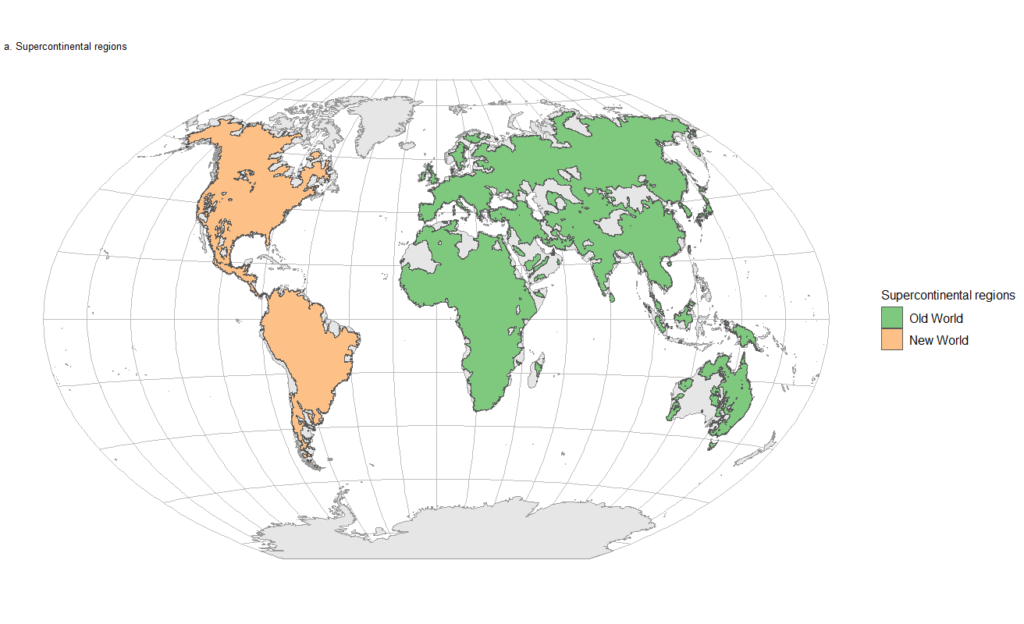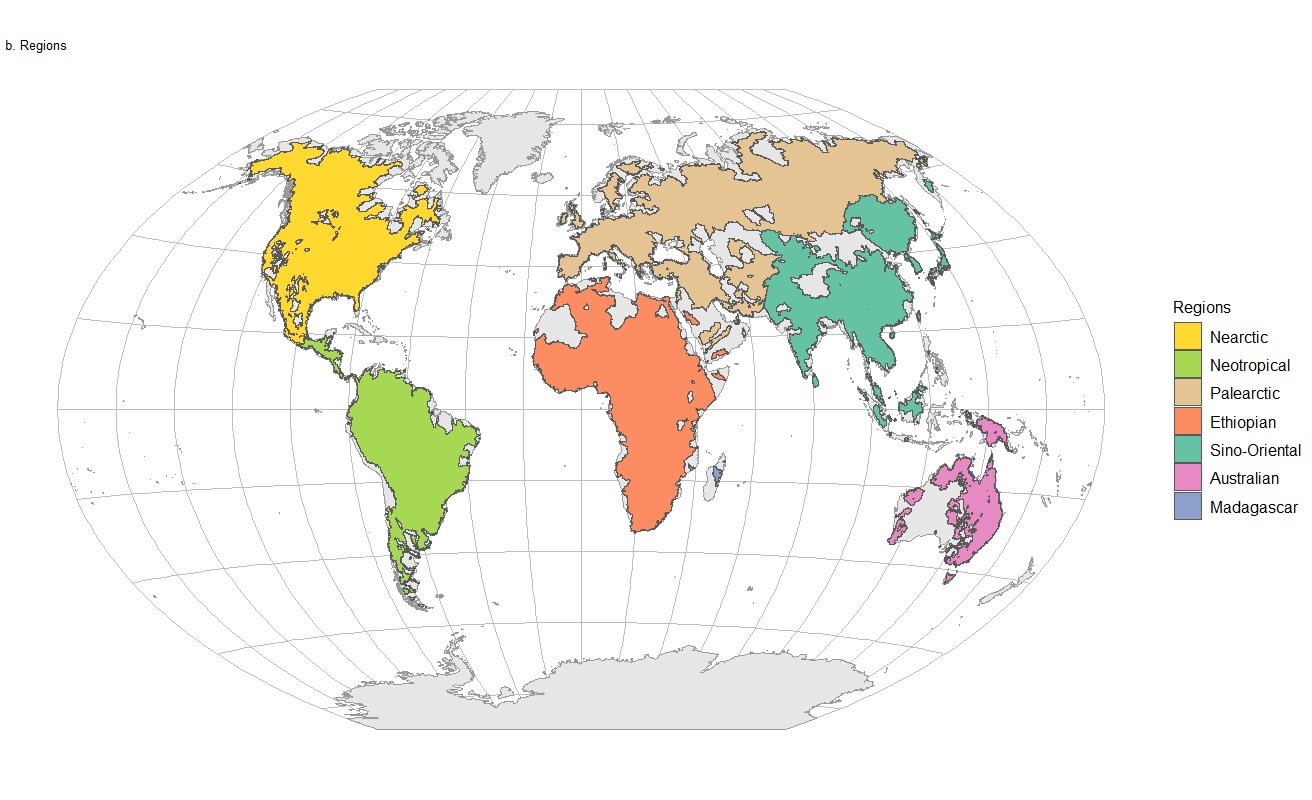Biogeographical regions of freshwater fishes
Polygons of the global biogeographical regions of freshwater fishes (ESRI shp format):
- Regions and supercontinental regions: zip file
- Supercontinental regions only: zip file
- Regions only : zip file
Polygons of all basins of Tedesco et al. (2017) with region assignments:
gpkg format:
- Native regions: zip file
- Native regions with the Madagascan region merged into the Ethiopian region: zip file
ESRI format:
- Native regions: zip file
- Native regions with the Madagascan region merged into the Ethiopian region: zip file
Supercontinental regions are in the column « region.lv1 », and regions are in the column « region.lv2 ». Also note that we isolated the Baikal lake as a distinct basin, for consistency with how large lakes were managed in other areas of the world.
Note that these regions include manual corrections for basins with no or scarce data. Most manual corrections are detailed in Appendix S5 of Leroy et al. (2019). I made further changes in the files of polygons for all basins, where I manually assigned the polygons with no freshwater fish data to each region.
If you want to access the raw bioregionalisation without any manual correction, please see the GitHub repository of the Anthropocene biogeography of freshwater fishes, and especially this R file which contains the raw clustering outputs of native and Anthropocene regions for each basin (load the file in R with ‘readRDS()’).
For those interested in the methods we used in Leroy et al. (2019), I wrote a complete, detailed tutorial on how to perform biogeographical network analyses in R here: https://github.com/Farewe/biogeonetworks
However, we are currently developing a new package to perform bioregionalisation in R, which covers a very broad range of methods. This package will supersede biogeonetworks in the near future: https://biorgeo.github.io/bioregion/

